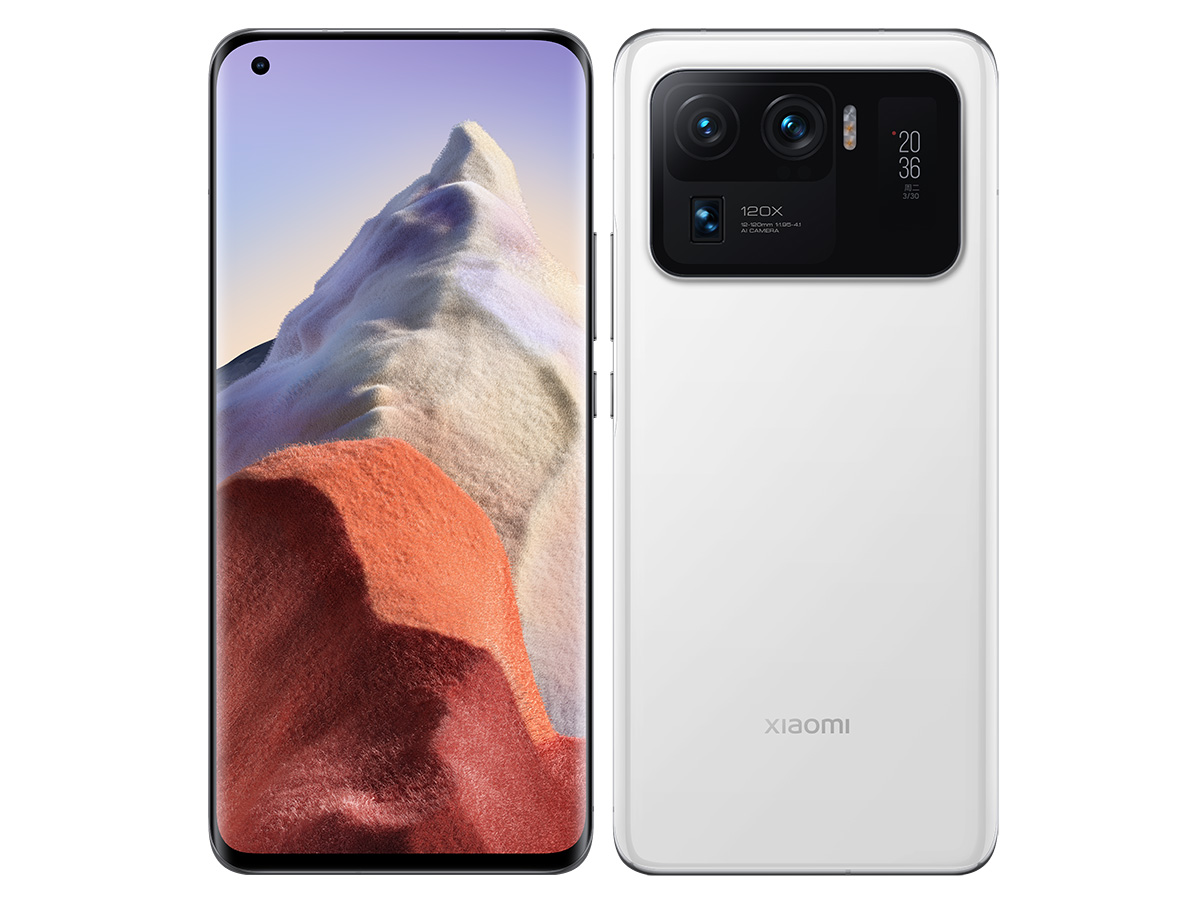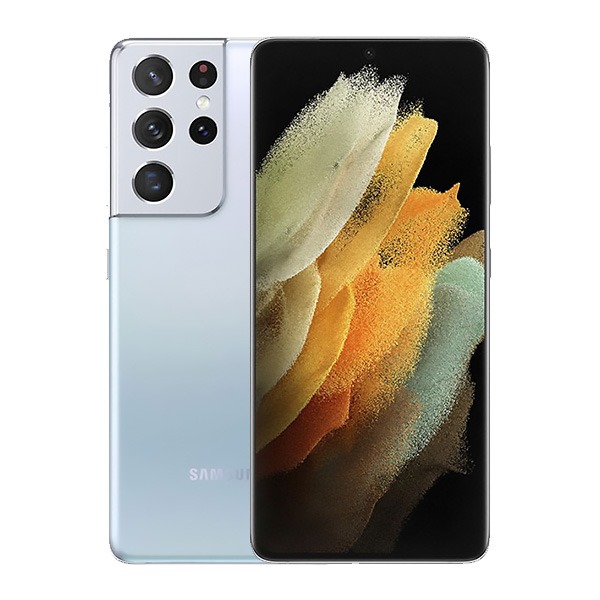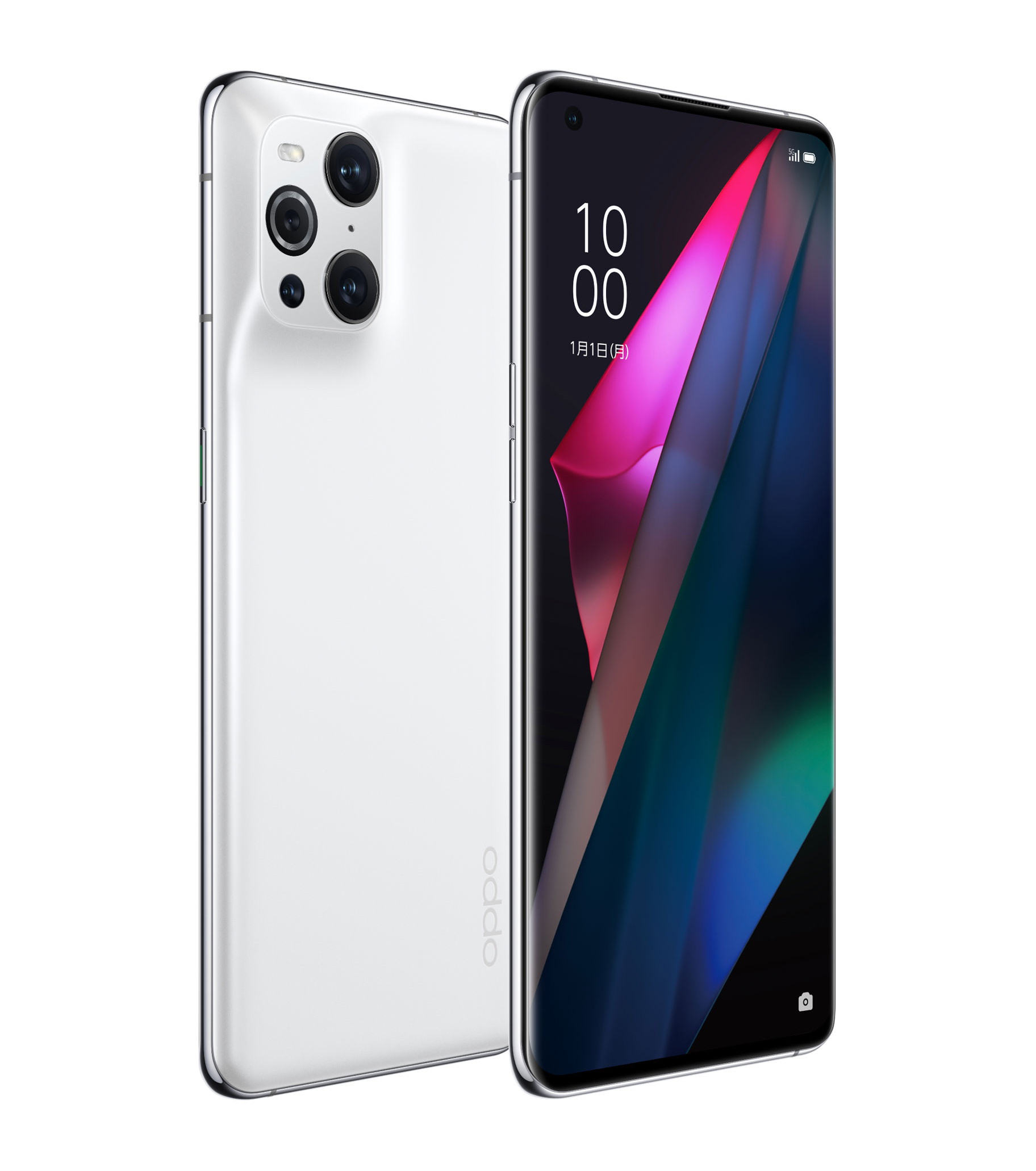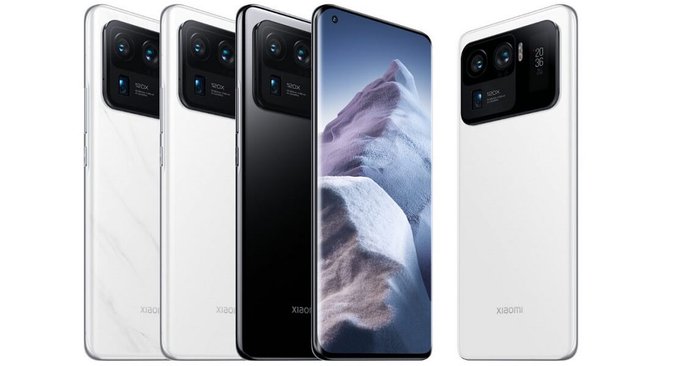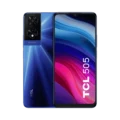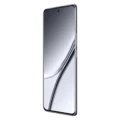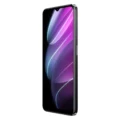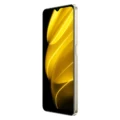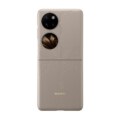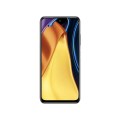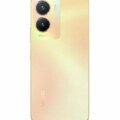- Specifications Pro
- Mobile specifications and prices
- Xiaomi
- Xiaomi Mi 11 Ultra
Xiaomi Mi 11 Ultra
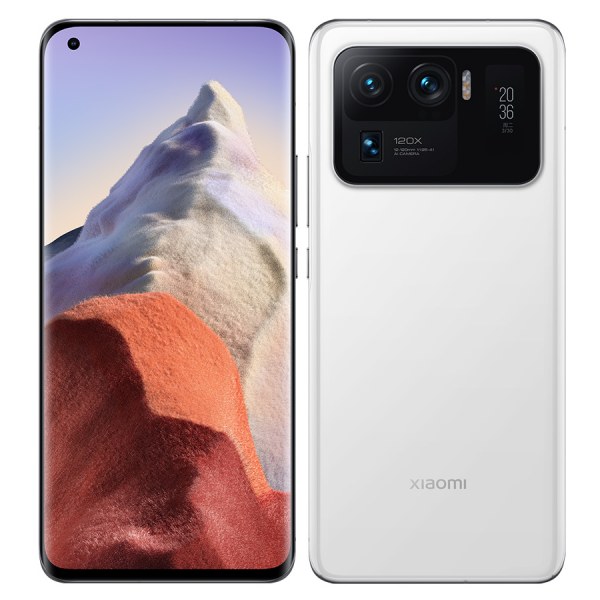
Ultra phones are the new trend among Android phones and mean the best and strongest specifications, and therefore with a price that is definitely higher than traditional flagship phones, Xiaomi stormed that battle this year after it revealed the Xiaomi Mi 11 Ultra last March.
The Mi 11 Ultra, which has been a huge hit in China, has the best specifications currently available in the world of smartphones. The phone also comes with the largest camera sensor ever seen in a smartphone, which enabled the phone's camera to reign over DXOMARK for a while.
During the coming lines, we will talk about the specifications and price of the Xiaomi Mi 11 Ultra, as well as a comprehensive review of the best Xiaomi phones ever and all aspects of the phone, including the advantages, disadvantages, and all other details.
Xiaomi Mi 11 Ultra Specs
Xiaomi Mi 11 Ultra Price
The price of the phone is certainly not cheap, considering that it is the Ultra version and not just a regular flagship phone, and therefore the price of the Mi 11 Ultra is 915 dollars for the standard version 8 + 256 GB, which equals 14,360 Egyptian pounds, 3430 SAR, 3360 AED.
While the 12 + 256 GB version was priced at $ 1,000, 15,700 EGP, 3,750 SAR, 3,675 AED. If 256GB isn't enough for you, there's the top 12 + 512GB version that comes at $1,080.
This price list is for the Chinese market only for sure while the phone was priced in Europe for 1200 euros which is definitely a high price as the user can turn to other alternative, cheaper options such as Oppo Find X3 Pro، Samsung Galaxy S21 Ultra.
It is worth noting that the phone has not been launched in Egypt, the Middle East, Africa and North America, which is a policy followed by Xiaomi for a long time. The launch of flagship phones is limited to China and some European markets only.
This policy certainly contributed to establishing Xiaomi in the minds of users as a brand of phones in the middle and economy category only. If the company wants to sell its flagship phones well and convince the user to accept the idea of buying a flagship phone from Xiaomi, it must make it more available in global markets.
Xiaomi Mi 11 Ultra Unboxing
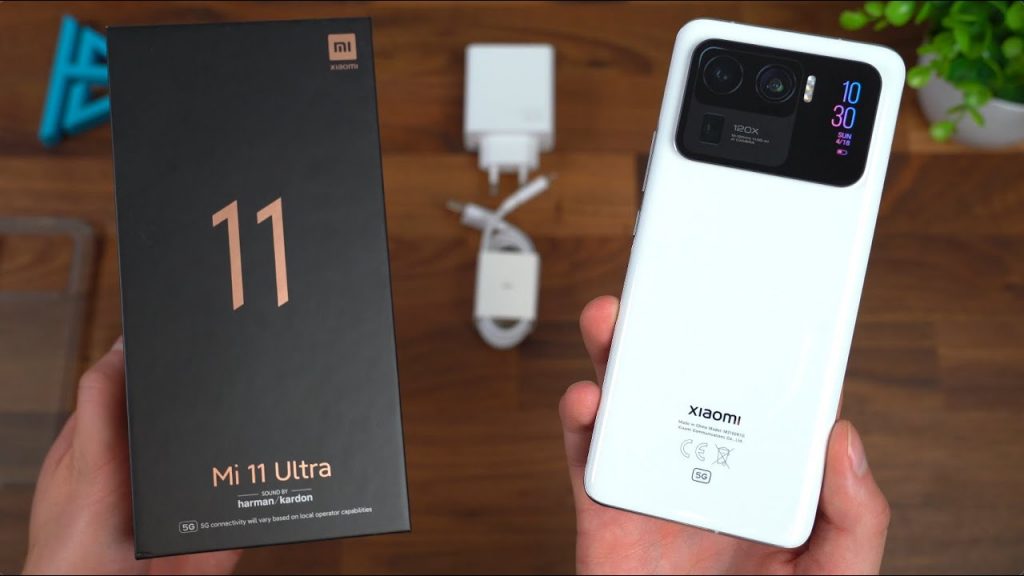
Besides the smartphone itself of course, the Mi 11 Ultra package has an attached 67W fast charger, USB cable, clear case, pin for SIM tray, USB-C adapter to 3.5mm headphone jack, it is worth noting that the Chinese version does not come with A charger is included in the box.
There are definitely no wired headphones which is to be expected given that not all the competitors come with wired chargers and headphones with their flagship phones, so we think buying wireless headphones is inevitable.
Design
Let's get to the controversial aspect that everyone is talking about. We can't talk about the design of the Mi 11 Ultra without mentioning the rear camera module, so let's start from there. The rear camera module extends across the width of the phone and takes up about a quarter of the rear panel area which makes it the largest camera module ever in a smartphone.
The problem is not only in the space, but in the thickness as well, even if the company abandoned the small secondary screen, the large rear camera cannot be ignored.
Definitely the camera is what anyone who sets their eyes on a phone for the first time will point to and look at it in amazement, it's just a small step away from becoming like a fixed SLR lens.
The phone is noticeably heavy as well (234 grams), which is to be expected, even though it comes with the same display size as Mi 11, the reason behind this may be that the phone comes with a ceramic back instead of glass, but the camera unit is certainly the most prominent factor in the weight of the phone.
The positive side is that the user will not feel that the phone is heavy at all because Xiaomi has distributed the weight quite well, but certainly no one can ignore that this phone is heavier than all the other competing flagship phones.
What contributes to the comfort of the phone when holding it is the curved edges, in addition to the fact that the screen is already curved. As mentioned above, the back panel is made of ceramic and comes in white or black.
There's no 3.5mm headphone jack which certainly comes as no surprise, with USB-C as the only port, but you get stereo headphones to make up for it. Also, the fingerprint sensor here is located under the screen since it is an AMOLED model.
In terms of protection standards, the screen is covered with a glass layer of Gorilla Glass Victus, and there is also an IP68 standard for water and dust resistance, which will provide the required protection for the phone when immersed in water.
Regardless of the rear camera, the overall design of the Mi 11 Ultra is very impressive, it is simple, elegant and undoubtedly distinguished thanks to the smooth ceramic design. But I can't get over that the camera module spoiled that masterpiece of design.
Some may overlook it because of the phone's really great photographic capabilities, others will accept owning the phone with all its shape and design pros and cons, and the bigger party may not accept the phone in the end due to how bulky the phone is which prevents a lot from loving the Ultra.
Display
After we explained to you how the screen takes up a large size of the phone, it is undeniable that the screen is huge as well as it comes in 6.81 inches, just like the standard version. The screen supports a 120Hz refresh rate and comes with AMOLED model and QHD+ resolution. It is also definitely brighter than a regular phone screen as it supports a peak brightness of 1700 nits and supports other impressive features as well such as Dolby Vision - HDR10+.
What really distinguishes the screen of that phone from its counterparts in other leading competing phones is the dynamic refresh rate, which means controlling the speed and slowness of the experience of use, this feature will certainly appeal to many users and it also has a positive effect in terms of saving battery power.
This display is simply excellent and is definitely among the best in 2021 if you don't mind its size, which will not bother the user too much due to the excellent curved edges.
The black color is completely dark and deep, the rest of the colors are vivid and completely saturated, and the browsing experience of social media and the Internet is smooth and fast thanks to the high refresh rate, which fulfills all the desires of the user.
The rear display is certainly a welcome addition as it also comes in a 1.1-inch AMOLED model, the same panel used in the Mi Band 5. That small screen supports always-on display when the phone is placed facedown and can display various things such as a custom image or text Or even the clock and don't forget the notifications for sure.
This display is definitely a recent addition to the world of smartphones and being always on certainly makes it welcome and more energy efficient than the home screen especially if you are going to use it for the same purposes.
Internal hardware
The situation would have seemed worrying if the phone bearing the title Ultra did not have the most powerful internal hardware possible, but don't worry because Mi 11 Ultra packs the most powerful internals ever.
We have the flagship Snapdragon 888 processor that is only surpassed by the Snapdragon 888 Plus that supports the latest Xiaomi phone Mi Mix 4, this powerful processor is based on 8 or 12 GB RAM along with 256 or 512 GB internal storage, we believe that this is quite enough for the most demanding users and the standard version of the phone is also satisfactory for most users.
The phone will certainly provide a fantastic performance as it can handle all applications and games that require high graphics smoothly. You cannot give up on choosing this phone, especially if you want a powerful and mighty performance and a phone that will last for many years to come without feeling any lack of experience at all.
In terms of connectivity options, there is certainly support for 5G networks, along with Bluetooth 5.2 and Wi-Fi 6E. There is also NFC support, as well as an infrared blaster.
Camera
The user may scrutinize almost every aspect and will be more impressed with the screen, but he certainly wants an excellent camera that justifies the price of the phone, which is what we find here from the good eyes where the flagship Xiaomi phone excels in the possibilities of photography.
We have a triple rear camera consisting of a 50-megapixel primary sensor, certainly not the highest resolution but the sensor itself is quite large and is among the largest at the moment, ensuring more light enters, excellent dynamic range, excellent color-saturated image capture and great low-light performance .
In good lighting conditions the camera creations come out and all the photos taken are bright and cheerful. There is some noise when the lighting gets a bit lower but the photos are definitely excellent and full of detail. The night mode is definitely excellent but when there is more light around you the results are not ideal.
We have a 48MP ultra-wide lens, which produces excellent photos as well although the sensor is smaller than the main camera sensor and the aperture is narrower but the differences between the two cameras are not noticeable in good lighting conditions.
There is no optical stabilization in this lens but the results are fabulous and the images captured will certainly still be very impressive.
The most impressive thing about this camera is the telephoto sensor, for sure, Xiaomi is marketing that sensor that supports optical zoom up to 120x, which appears in the phrase written in the camera unit even, but the fact is that this sensor supports real optical zoom up to 5x and hybrid zoom up to 10x, and certainly Digital zoom is not an advantage because it uses processing for zoom making the image without any clear detail.
The optical zoom in this phone certainly cannot be compared to its counterpart in the Galaxy S21 Ultra, and this is one aspect in which Xiaomi does not excel, unfortunately. Therefore, we recommend that you rely on images taken with a maximum optical zoom of 5x only.
We have a single 20MP front camera which certainly takes excellent pictures in all conditions without a doubt. You can rely on it or use the rear camera to take selfies via the back screen.
The video shooting here is excellent as well. The camera supports 8K video capture at 30 frames per second and supports OIS optical stabilization, while the front camera is limited to 1080p video shooting. This is another negative point that does not favor the phone, given that the front camera in the S21 Ultra supports 4K video capture.
Battery
Since the size of the phone is very large, one can only expect a giant battery as well as the phone works on a lithium polymer cell with a capacity of 5000 mAh which provides excellent performance that can handle powerful phone requirements such as a large screen, after we tested the phone in most usage scenarios we found that it does not It lasts for more than a day and a half.
The phone supports fast charging and 67W wireless charging, which raises the phone's shares a lot when compared to competing flagships from Samsung and Huawei, for example.
Fortunately, the charger comes included in the phone's packaging and when we tested the charging we found that it reaches 51% in just a quarter of an hour, and 88% in 30 minutes making it one of the fastest charging phones to date.
But the nice trick here is that wireless charging is definitely more exciting but what may frustrate users is that they need to buy the original 67W wireless charger from Xiaomi which is only available in almost China and which the company says can fully charge the battery in just 47 minutes.
Software
The phone runs on the pre-installed Android 11 operating system that works alongside the MIUI 12 interface which is upgradable to MIUI 12.5. It is certain that the phone will receive the Android 12 update this year, but Xiaomi does not promise in the future a certain number of years in which it will commit to sending updates regularly to the phone, in contrast, most competing companies offer 3 years of continuous updates.
Mi 11 Ultra Pros and Cons
Xiaomi Mi 11 Ultra Comparion with other flagships
Key Specs
Pros
Cons
Key Specs
6.81 inch AMOLED displaySnapdragon 888 processor
50 MP Triple Camera
5000 mAh battery
67W Fast Charging
Pros
Excellent screenIndoor equipment is among the best in its class
A basic camera that takes good pictures
Giant battery
Super fast charging
Cons
ugly designThe phone is heavy
Optical zoom needs improvement
price is too high
Not available in most markets
Key Specs
6.8 inch AMOLED displaySnapdragon 888 processor
Quad Camera 108 MP
5000 mAh battery
25W fast charging
Pros
The best screen in any flagship phone everpowerful processor
Smooth software
Telephoto sensor supports superb optical zoom
Good availability in the markets
Cons
Battery life is not the bestSlow support for fast charging
Key Specs
6.7 inch AMOLED displaySnapdragon 888 processor
50 MP Triple Camera
4500 mAh battery
65W fast charging
Pros
Perfect displayStrong performance in all apps and games
Excellent rear camera
Fast shipping is commendable
Good availability in the markets
Cons
The price is sort of highBad telephoto sensor
Mi 11 Ultra Images and colors
Xiaomi Mi 11 Ultra Review
Specifications and price
Release Date
| Announcement Date | March 29, 2021 |
| Launch Date | April 2021 |
Body
| Dimensions | 164.3 x 74.6 x 8.4 mm (6.47 x 2.94 x 0.33 in) |
| Phone Materials | Glass front (Victus Gorilla Glass), ceramic back, aluminum frame |
| Weight | 234 grams |
| Phone Colors | Black and White |
Display
| Display | OLED touch screen, 1 billion colors |
| Size | 6.81 in |
| Resolution | 1440 x 3200 pixels, a pixel density of 515 pixels per inch |
| protection layer | Gorilla Glass Diet |
| Screen-to-body ratio | 91.4% screen-to-body ratio |
| Other Features |
HDR10+ 120Hz refresh rate 1700 nits |
Internal Hardware
| Chipset | Qualcomm Snapdragon 888 - five nm |
| CPU | Octa-core (1 x 2.84 GHz Kryo 680 & 3 x 2.42 GHz Kryo 680 & 4 x 1.80 GHz Kryo 680) |
| GPU | Adreno 660 |
| Memory Card | No |
| RAM | 8 - 12 GB |
| Internal Storage | 256 - 512 GB |
Camera
| Main | Triple |
| 1st Sensor | 50 MP (wide), f/2.0 aperture |
| 2nd Sensor | 48 MP (Periscope Telephoto), f/4.1, 5x optical zoom, 120x hybrid zoom |
| 3rd Sensor | 48 MP (ultrawide), f/2.2 |
| Features | Dual-tone LED flash, panorama, HDR |
| Video Recording | 8K@24/30fps, 4K@30/60fps, 1080p@30/60/120/240/960fps, gyro-EIS, HDR10 rec. |
| Selfie Camera | Single |
| - | 20 MP (wide), f/2.2 aperture |
| Features | HDR |
| Video Recording | 1080p@30fps, 720p@120fps, gyro-EIS |
Battery
| Capacity | 5000 mAh non-removable |
| Type | Lithium Polymer |
| Fast Charging | 67 W, up to 100% in 36 minutes |
| wireless charging | 67W |
Sound
| 3.5mm jack | No |
| Other features of the sound | 24-bit/192kHz audio |
| Loudspeaker | Yes, with stereo speakers |
Additional Features
| Safety | Under-display fingerprint sensor - optical |
| Sensors | Accelerometer, gyro, proximity, compass, barometer |
Model
| Phone Name | Xiaomi Mi 11 Ultra |
Phone Price
| Price in US Dollar | 914 dollars |
| Price in Saudi Arabia | 3,427 riyals |
| Price in Iraq | 1335811 dinars |
| Price in India | 66510 rupees |
| Price in Egypt | 14360 EGP |

